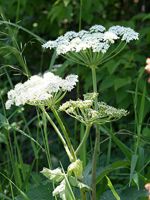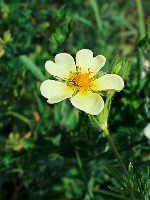Mon-Fri 9am - 5pm Mountain time
Pennsylvania Cinquefoil vs Cow Parsnip
Heracleum maximum
Potentilla pensylvanica
CUSTOM GROW
NOT AVAILABLE THIS SEASON - MIGHT RETURN
Cow Parsnip is a native perennial wildflower known for its tall growth, very large leaves, and broad clusters of white flowers. The abundant blossoms provide nectar and pollen for a wide variety of pollinators, including bees and butterflies. Birds and small mammals feed on its seeds, while the foliage serves as a larval host for certain butterfly species.
Cow Parsnip is often among the first native perennials to establish in disturbed or open sites. It typically grows in moist meadows, along streambanks, forest edges, and roadsides. Although usually a short-lived perennial or biennial, it readily self-seeds and maintains strong populations where conditions are favorable.
Cow Parsnip is the only native Heracleum in North America and should not be confused with the highly invasive Giant Hogweed (H. mantegazzianum).
Note: The sap of the Cow Parsnip can cause phytodermatitis when exposed to ultraviolet light (sunlight). This can cause rashes or even burns. Care should be taken if pruning or handling this plant.
Pennsylvania Cinquefoil is well suited for naturalisation projects as it is a wildflower native to North America. It is widespread and can be found growing in rocky soils at higher elevations in the mountains and foothills, as well as the dry prairies. The Pennsylvania Cinquefoil is capable of growing in cold, harsh conditions. The bright yellow flowers are found at the top of long stalks in small dense clusters and are ideal for attracting pollinators.
Cow Parsnip Quick Facts
Pennsylvania Cinquefoil Quick Facts
Toxicity: sap causes skin irritation

